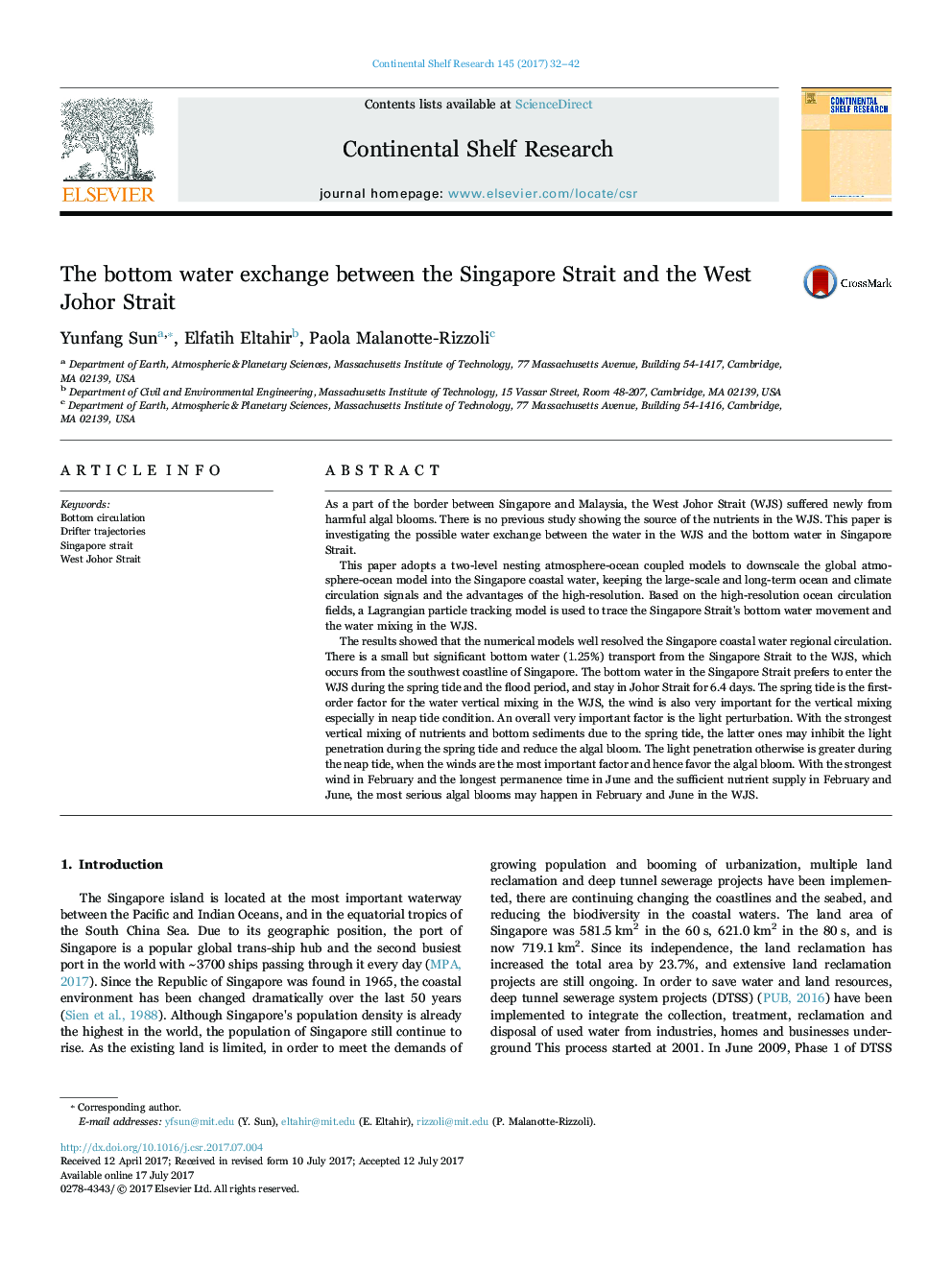| کد مقاله | کد نشریه | سال انتشار | مقاله انگلیسی | نسخه تمام متن |
|---|---|---|---|---|
| 5764417 | 1626068 | 2017 | 11 صفحه PDF | دانلود رایگان |
- Numerical particles trajectories in Singapore coastal water.
- Bottom water enters West Johor Strait from Singapore Strait.
- Downscaling the global model by nesting atmosphere-ocean coupled model.
As a part of the border between Singapore and Malaysia, the West Johor Strait (WJS) suffered newly from harmful algal blooms. There is no previous study showing the source of the nutrients in the WJS. This paper is investigating the possible water exchange between the water in the WJS and the bottom water in Singapore Strait.This paper adopts a two-level nesting atmosphere-ocean coupled models to downscale the global atmosphere-ocean model into the Singapore coastal water, keeping the large-scale and long-term ocean and climate circulation signals and the advantages of the high-resolution. Based on the high-resolution ocean circulation fields, a Lagrangian particle tracking model is used to trace the Singapore Strait's bottom water movement and the water mixing in the WJS.The results showed that the numerical models well resolved the Singapore coastal water regional circulation. There is a small but significant bottom water (1.25%) transport from the Singapore Strait to the WJS, which occurs from the southwest coastline of Singapore. The bottom water in the Singapore Strait prefers to enter the WJS during the spring tide and the flood period, and stay in Johor Strait for 6.4 days. The spring tide is the first-order factor for the water vertical mixing in the WJS, the wind is also very important for the vertical mixing especially in neap tide condition. An overall very important factor is the light perturbation. With the strongest vertical mixing of nutrients and bottom sediments due to the spring tide, the latter ones may inhibit the light penetration during the spring tide and reduce the algal bloom. The light penetration otherwise is greater during the neap tide, when the winds are the most important factor and hence favor the algal bloom. With the strongest wind in February and the longest permanence time in June and the sufficient nutrient supply in February and June, the most serious algal blooms may happen in February and June in the WJS.
Journal: Continental Shelf Research - Volume 145, 1 August 2017, Pages 32-42
